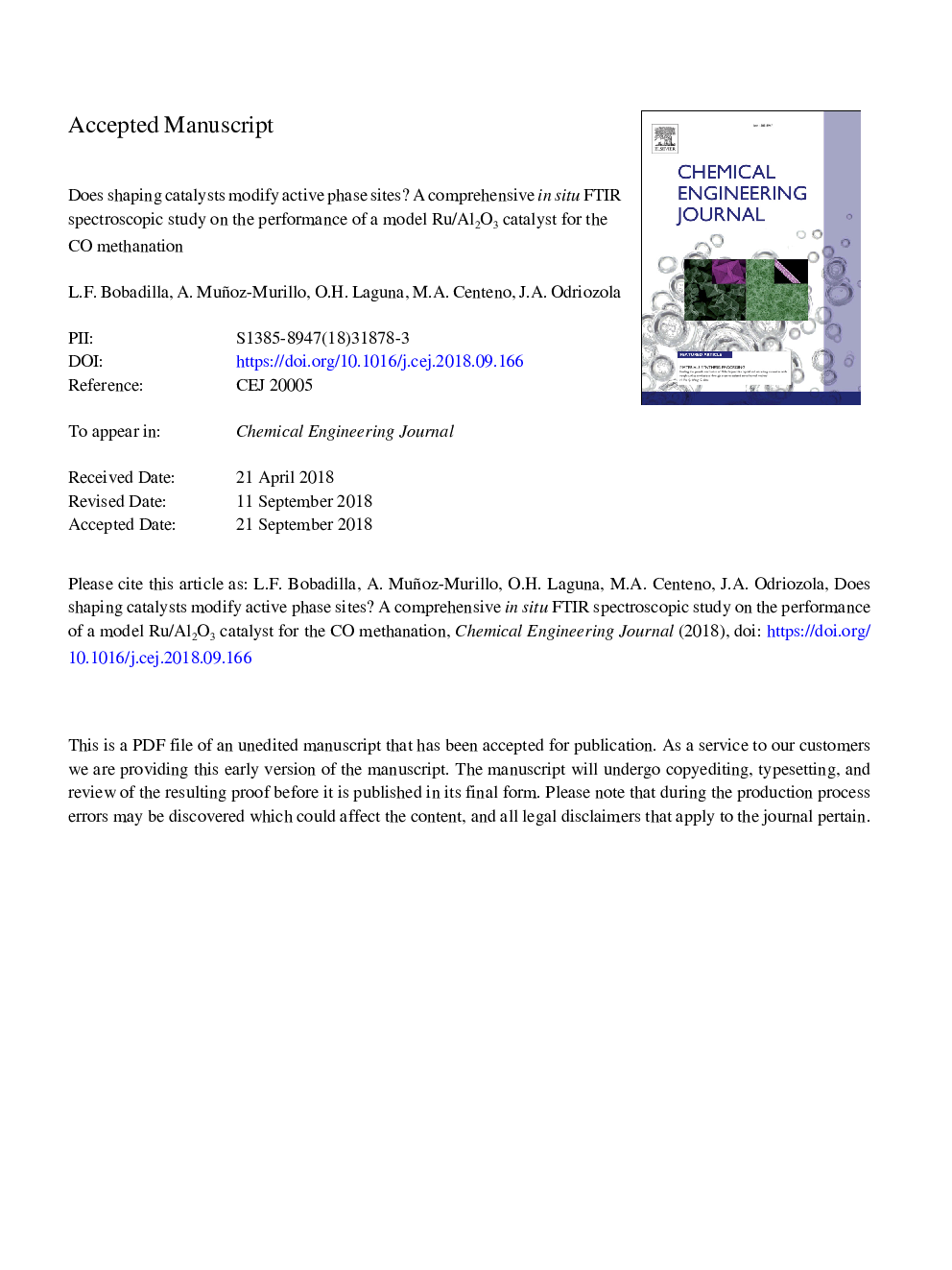| Article ID | Journal | Published Year | Pages | File Type |
|---|---|---|---|---|
| 10225125 | Chemical Engineering Journal | 2019 | 40 Pages |
Abstract
Routinely, it seems assumed that the catalytic layer coated on monoliths and microchannel reactors preserve the properties of the initial powder catalyst. However, this assumption should be reasonably demonstrated since the set of chemical and physical manipulations involved in the preparation of these catalytic devices hardly does not alter the surface of the starting catalyst powders. This work aims to evaluate the transformations that takes place in a model Ru/Al2O3 catalyst during a typical slurry preparation procedure and their impact on the catalytic performance for the CO methanation reaction and the selective methanation of CO in CO2-rich reformate gases. For this purpose, we have conducted an in situ comprehensive study by means of Fourier Transform Infrared Spectroscopy (FTIR) in which the nature of the species present on the surface of the catalyst during CO hydrogenation was analyzed. This study reveals that during the preparation of the slurry the starting Ru/Al2O3 catalyst suffers a redispersion of metallic Ru particles and more surface hydroxyls are created by the incorporation of additional alumina. These modifications have a noticeable influence in the catalytic performance and despite their importance, these aspects have been poorly considered in other studies.
Related Topics
Physical Sciences and Engineering
Chemical Engineering
Chemical Engineering (General)
Authors
L.F. Bobadilla, A. Muñoz-Murillo, O.H. Laguna, M.A. Centeno, J.A. Odriozola,
